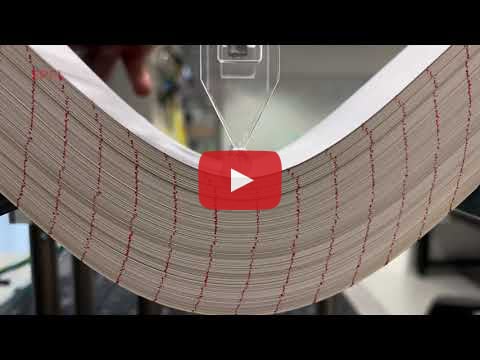No images? Click here

July 2021
NEWS
Next-generation implants will be biodegradable and non-invasive

EPFL engineers have developed a neural interface that disappears harmlessly in the body after several months and allows natural tissue to grow back. What’s more, it can be implanted in a patient’s blood vessel rather than inside the brain, thereby avoiding the need for invasive surgery.
Moving one step closer to personalized anesthesia

EPFL researchers have developed a device that can continuously measure the blood concentration of propofol – one of the main compounds used in anesthetics – in patients as they’re being operated on. That will help anesthesiologists deliver more personalized doses.
Pumped to assist the heart with an artificial aorta

Scientists from EPFL and University of Bern have successfully implanted – in vivo – their first artificial tubular muscle that augments the aorta and assists cardiac function in pumping blood. Based on these results, the Werner Siemens Foundation has provided the green-light for granting an extra 8 million CHF over 8 years to develop artificial muscles for human disorders.
New Imaging Center Pools the Know-How of Five EPFL Schools

EPFL has just opened a new imaging center to serve as a hub for state-of-the-art technology in imaging systems. The only one of its kind in Switzerland, the center pools the imaging expertise that is currently housed at nearly a hundred laboratories in five EPFL schools. The goal is to facilitate cross-disciplinary research and anchor EPFL’s position at the cutting edge of imaging technology for research applications.
Using light to monitor cancer

Researchers at EPFL have developed a technology based on nanophotonics and data science to detect and monitor cancer biomarkers at an early stage. Their research is published in Nature Communications. The researchers believe that their method offers unique possibilities for highly reliable, compact, and low-cost sensing devices in the future, especially when combined further with artificial intelligence.
Tailored optical stimulation for the blind

EPFL scientists in a European collaboration propose a personalized protocol for optimizing stimulation of optic nerve fibers, for the blind, which takes into account feedback from the viewer’s brain. The protocol has been tested on artificial neural networks known to simulate the physiology of the entire visual system, from the eye to the visual cortex. The stimulation protocol will be tested in clinical trials with partners in Rome.
Microscope reveals the secrets of a material's structure

EPFL scientists have made an important discovery about the structure of barium titanate, a material used in everyday objects. Their findings refute existing theories on the displacement of the material’s atoms.
A virus to identify small peptide mimics of antifreeze proteins

Scientists at EPFL and the University of Warwick have used a virus to identify a peptide that can serve the same function as antifreeze proteins. By preventing ice formation, the compound could play a key role in preserving cells and organ transplants and in food conservation.
Modeling the friction between pages in a book
Engineers at EPFL and École Polytechnique in France analyzed the friction between pages in a book and the mechanical force needed to bend them. Drawing on their experiments, they developed a new theoretical model for predicting the elasto-frictional behavior of stacked layers.
Read more about the School of Engineering
Read all the news from the School of Engineering and learn more about the 2021 EMBS Technical Achievement Award received by Silvestro Micera, the Innosuisse grant, the Charitat Award, the secret to acquiring professional skill, the new AI-driven software AICA, the cutting edge solutions for water-energy conservation, and much more...
EVENTS
Events at the School of Engineering
EPFL School of Engineering have many online and onsite conferences and seminars in a wide range of topics. Have a look at our calendar to be informed about the upcoming events.

Variability and co-variations in ion channel expression and in electrophysiological properties in neurons
Place and time:
Online
15:00 > 16:00
IN THE MEDIA
TechExplorist
May 31, 2021
FOLLOW US
You can access the previous versions of our newsletter here!




